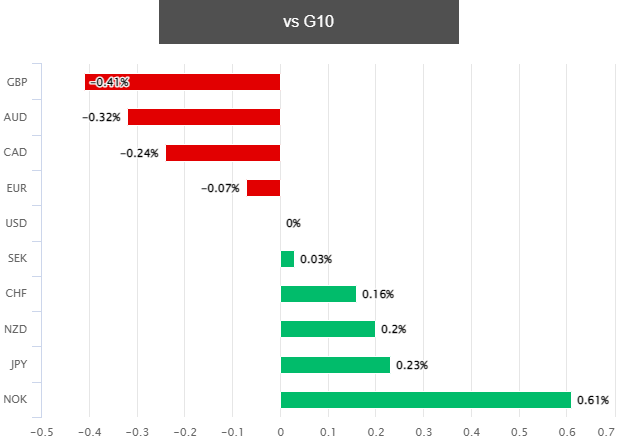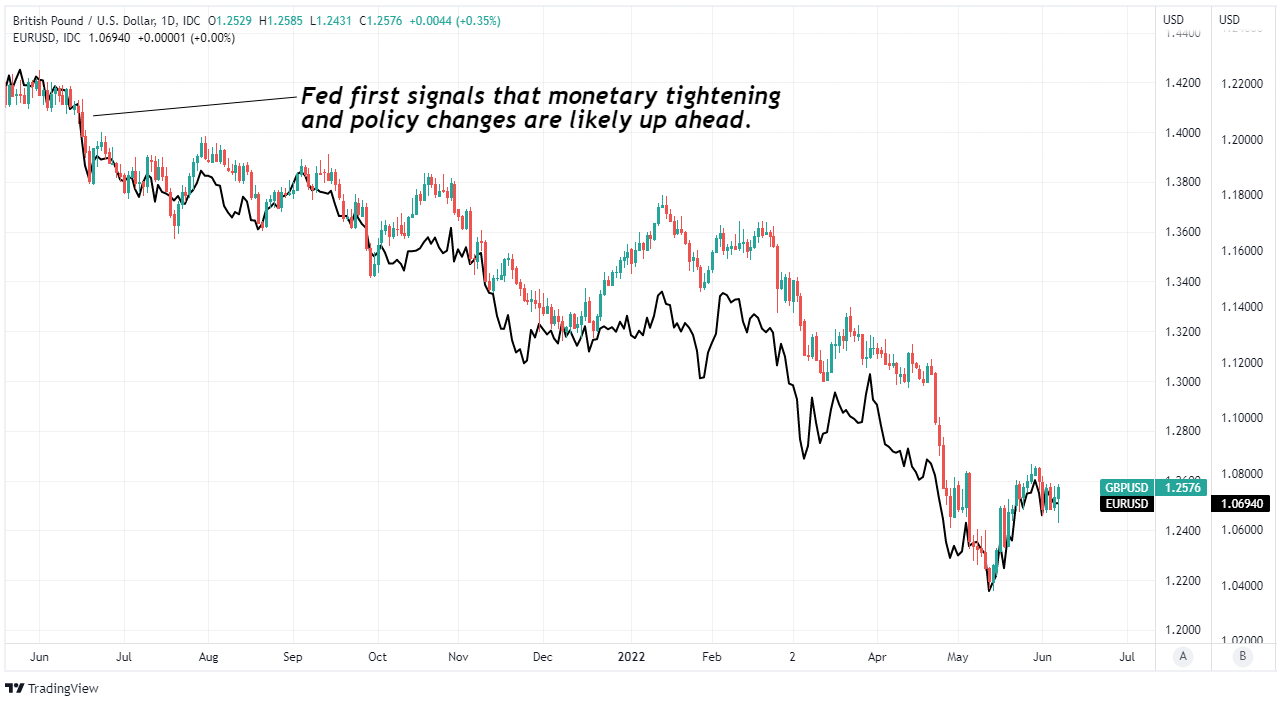Dollar Eases Back after Data Shows U.S. Consumer Imports Falling
- Written by: James Skinner
-
“The deficit decreased from $107.7 billion in March (revised) to $87.1 billion in April, as exports increased and imports decreased. The previously published March deficit was $109.8 billion,” - Census Bureau.

Image © Adobe Images
The Dollar softened after international trade data showed U.S. demand for imported consumer items fell during April in an outcome that could be pertinent for the Federal Reserve (Fed) monetary policy outlook.
Dollars had been bought widely on Tuesday, leading it to gain over almost all major currency counterparts, although this trend went into reverse somewhat after the Census Bureau released its estimate of the trade balance for April.
“The deficit decreased from $107.7 billion in March (revised) to $87.1 billion in April, as exports increased and imports decreased. The previously published March deficit was $109.8 billion,” the Census Bureau said.
The U.S. trade deficit fell sharply during April due to an economically supportive increase in exports and a fall in imports that would also serve to boost GDP, although the data potentially carries with it a dovish message about the extent to which the Fed’s interest rate might need to rise later this year.
"The decrease in imports of goods reflected decreases in consumer goods($6.3billion), in industrial supplies and materials($5.3 billion), and in capital goods($2.6 billion). An increase in automotive vehicles, parts, and engines ($1.4 billion) partly offset the decreases," the Census Bureau also said.
 Above: Pound to Dollar rate shown at 15-minute intervals alongside EUR/USD. Click image for closer inspection.
Above: Pound to Dollar rate shown at 15-minute intervals alongside EUR/USD. Click image for closer inspection.
The Dollar’s subsequent declines were broad and most observable against currencies with central banks which are either in the process, or on the cusp, of lifting their interest rates in order to rein in their own runaway inflation rates.
"Both sides of the trade ledger contributed to the improvement in trade, as exports rose 3.5 percent and imports fell 3.4 percent. Along with the April data,” says Lawrence Werther, an assistant U.S. economist at Daiwa Capital Markets.
“The pronounced month-to-month improvement in goods trade also was evident after adjusting for price changes, as the real deficit narrowed by $19.3 billion from March to April," Werther and colleagues also said.
One interpretation of the market response to the data would be that falling imports signify cooling demand for manufactured consumer items among households, which has been one important source of U.S. inflation of late and is something the Federal Reserve has explicitly set out to curb.
“The key challenge facing the economy is unacceptably high inflation, which reflects the imbalance between strong aggregate demand and constrained aggregate supply,” Federal Reserve Bank of Cleveland President Loretta Mester told the Philadelphia Council for Business Economics just last week.

Above: U.S. Dollar performance against G10 currencies on Tuesday. Source: Pound Sterling Live.
"Strong demand has occurred in the face of very constrained supply in both product and labor markets. Product markets have had to deal with a cascading set of disruptions to supply chains, reflecting differences in virus conditions and virus containment policies across the globe," she added.
The Fed has been seeking to use monetary policy to reduce consumer demand to a level that is in better balance with the constrained supply of goods referenced above, and this is a key part of the reason why policymakers have become more hawkish in their statements during recent months.
“The FOMC is committed to using its tools to get inflation under control, on a downward trajectory to its longer-run inflation goal of 2 percent, and the Committee has begun the process of repositioning monetary policy. This recalibration reflects the evolution of economic conditions, the economic outlook, and the risks around the outlook, and as the recalibration proceeds, it will continue to do so,” Loretta Mester also said.
These kinds of statements impact all financial markets as well as overall financial conditions within the economy, conditions which have tightened substantially since June last year and the point when the Fed first began to signal that it would soon look to tighten its monetary policy.
One further possible interpretation of Tuesday’s import figures and the market response to them is that the Fed is having some success in its pursuit of the above objective, and that the financial markets have cottoned onto that.
 Above: Pound to Dollar rate shown at daily intervals alongside EUR/USD. Click image for closer inspection.
Above: Pound to Dollar rate shown at daily intervals alongside EUR/USD. Click image for closer inspection.





